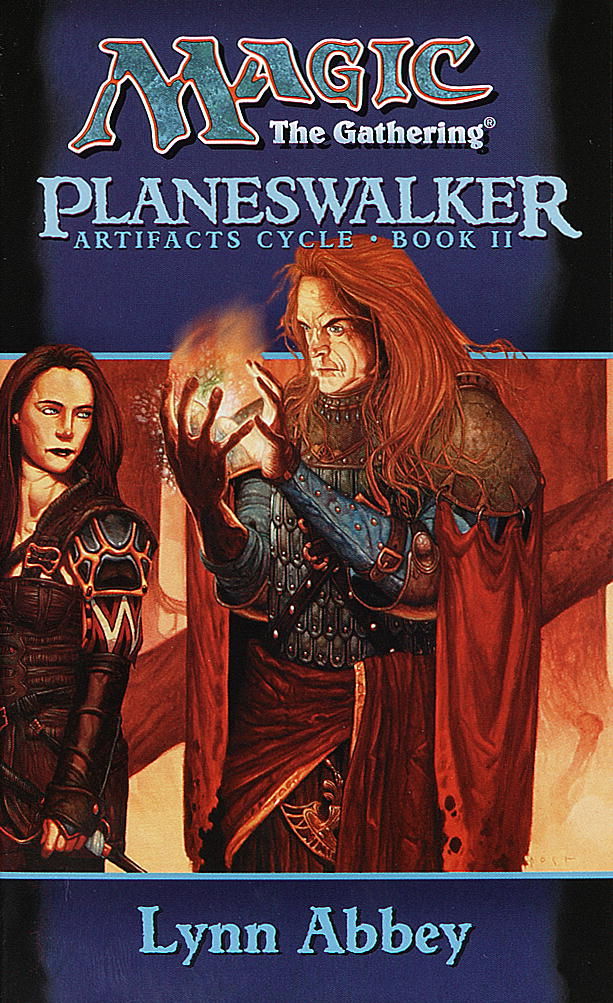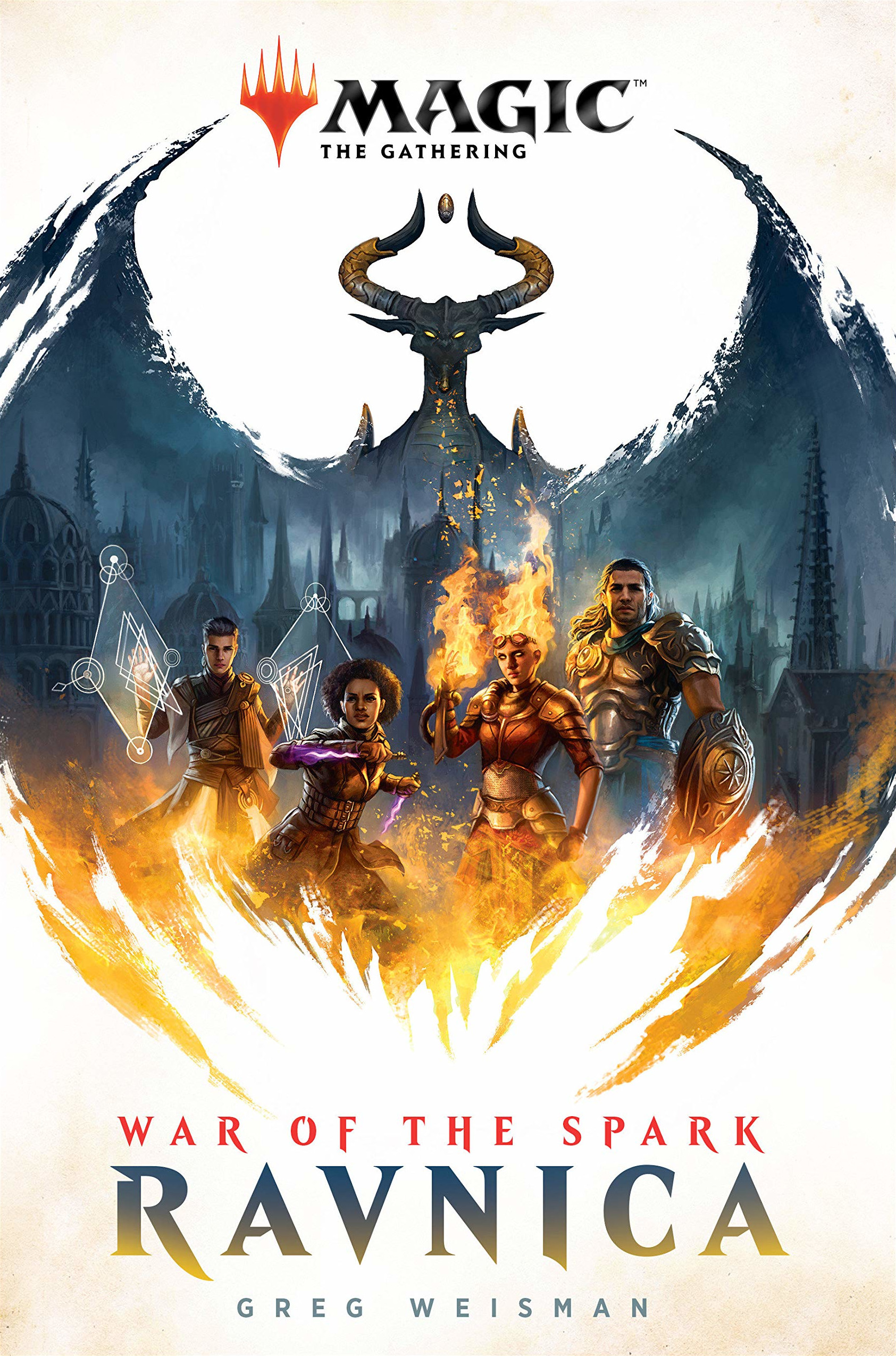Planeswalker Jambalaya
A review of Greg Weisman’s Magic The Gathering novel War of the Spark: Ravnica and how it compares to older Magic fiction.
A while ago, I decided to start reading Magic The Gathering background novels again. I’d read some (in German translation) back when I was a kid and with my recent foray back into the game I decided, it would be a good idea to start over with the English originals. OCDed as I am, I also decided to start back at the very beginning of the story, with the Artifacts Cycle. So far, I’ve finished The Thran and The Brothers’ War and I’m now on the last few pages of Planeswalker.
When the new Magic set War of the Spark came out recently, I went to the MTG Story website to read some short stories about it and realised that, for the first time in almost a decade, Wizards had again commissioned a full-on Magic The Gathering novel. It’s called War of the Spark: Ravnica and was written by Greg Weisman. Since I couldn’t get my hands on it in Kindle form over here, I bought a hardback copy, which I’ve just finished the other day. Here are my thoughts on it – and, to some degree, on how it compares with Lynn Abbey’s Planeswalker which I was reading somewhat in parallel.
Stifling Constraints
Without a doubt, Greg Weisman knows what he’s doing as a writer. He’s co-created and written much of the Disney series Gargoyles and he’s a prolific comic book writer, including for both Marvel and DC. He’s also written well received children’s novels in the World of Warcraft universe and a series of books of his own. I therefore attribute many of the failings of War of the Spark: Ravnica to the tight constraints he must have been working under from Wizards of the Coast. Don’t get my wrong, the actual card set for War of the Spark is great and the background story is a good setup. And the novel is competently written and also ticks all the boxes for such a tie-in project, but maybe that’s exactly the problem.
One gets the feeling reading this, that Weisman was told very clearly what was going to happen in the broader story arc – which no doubt had been planned by Wizards for many, many years – and was also given a very long list of planeswalkers and other important characters to include. And that, I’m guessing, left him very sparse room to manoeuvre to come up with his own characters and situations, to fill the backstory with life.
War of the Spark’s big deal are the planeswalkers. Whereas there always used to be very few planeswalkers in any Magic set, a handful at most and at mythic rarity at that, they are everywhere in WAR. In this set, planeswalkers appear in rare and uncommon rarity for the first time. In fact, one of the set’s design tenets was that players would be guaranteed to get a planeswalker in every booster pack they opened. All of these planeswalkers obviously had to appear in the book. This is why, aside from introducing a new planeswalker (Teyo Verada), there are basically a dozen main characters in the novel. Jace Beleren, Gideon Jura, Teferi, Ajani Goldmane, Karn, Vraska, Chandra Naalar, Nissa Revane, Kaya, Ral Zarek, Liliana Vess, Jaya Ballard and, of course, Nicol Bolas, all make an appearance. And this isn’t even a conclusive list.
Epic Stories Need Space …and Time
I don’t envy Weisman having to track all of these guys plus a number of other important characters, elementals and gods, all over Ravnica, chasing and being chased by a horde of undead warriors from across the planes. No wonder he had precious little time to tell his own story. Or enough space to develop any of the protagonists into real characters within the bounds of his tale.


Compared with Planeswalker, which largely tells the story of the Magic set Urza’s Saga and was written concurrently with it and, presumably, in similar general circumstances, War of the Spark: Ravnica is a lot more clumsy. Whereas Abbey’s book is a leisurely stroll back and forth through thousands of years of Magic history, Weisman had to produce a tour the force covering a very hectic day on the city planet of Ravnica.
Where Planeswalker is so slow in places that I stopped reading the book several times because I got almost bored, the newer book is a very swift and easy read. Too easy. Even though much-beloved planeswalkers are dying, I never got a sense of stakes being what they should be with Weisman’s book. Whereas Abbey’s much longer novel is a bit like classic Tolkien: You mostly read it to immerse yourself in the atmosphere but unbeknownst to you that also makes you slowly get attached to the characters – which means you actually feel something when they die. Which is also made possible by having two or three main characters instead of a dozen. You can’t possibly care about a dozen people at once, storytelling doesn’t work like that.
There is the distinct possibility that they aimed for War of the Spark: Ravnica to be an Avengers-movie-style comic book romp. In that case, it might be that it works for a large part of the audience. I can’t assess this, because Marvel movies like that haven’t worked for me in years – with the possible exception of Guardians of the Galaxy, which has a comparably manageable cast.
Not for Me
As it stands, this wasn’t a book for me. It was easily readable enough and the general background story was nice, but the whole thing just didn’t work as a novel. Neither structurally nor in the detailed interactions of the individual characters. This was made especially clear to me by my chance parallel reading of the much older book. The deeper I got into the newer one, the more it made me want to go back and read more about Urza and Xantcha.
Images: Wizards of the Coast
